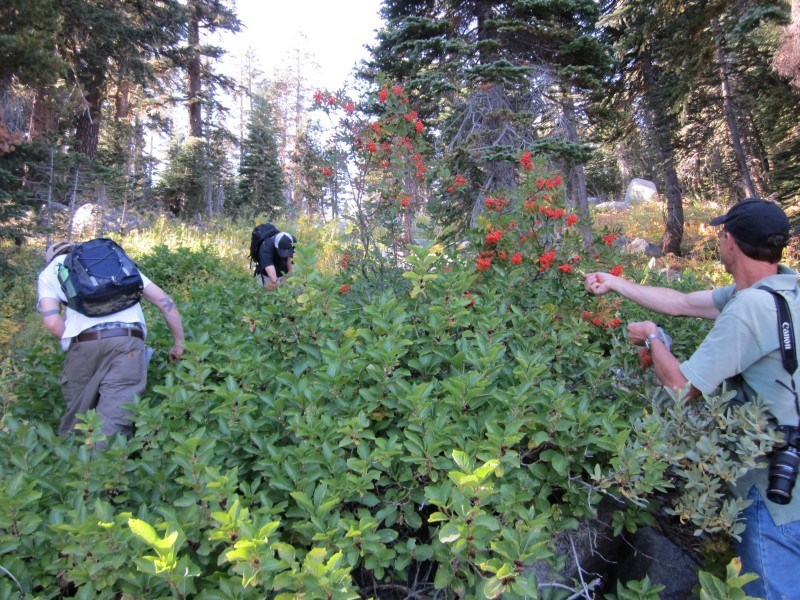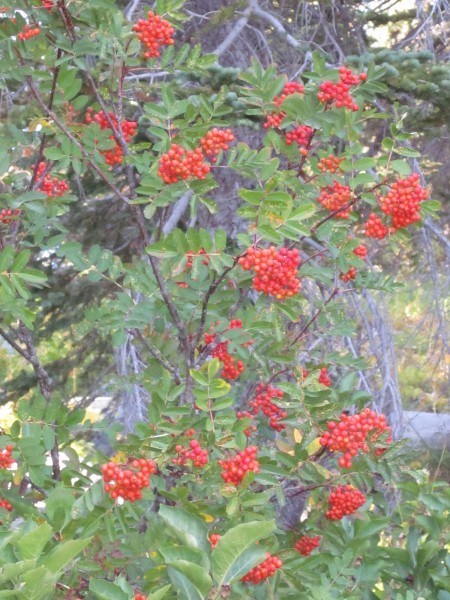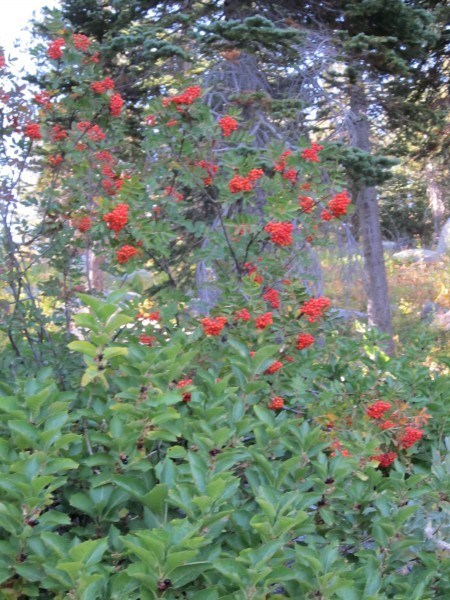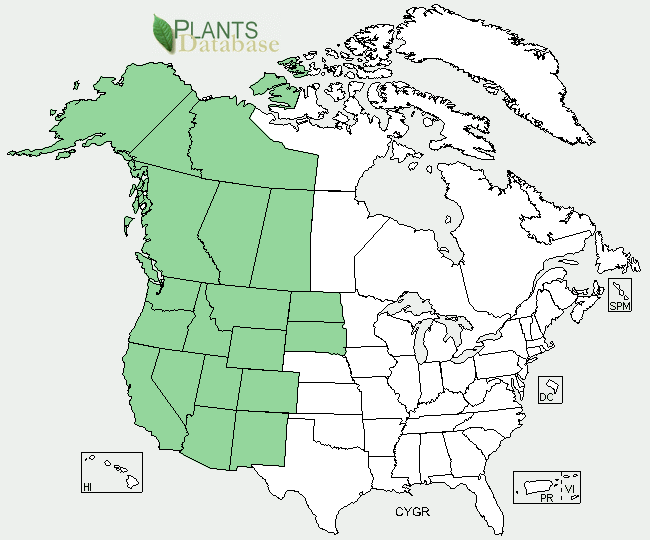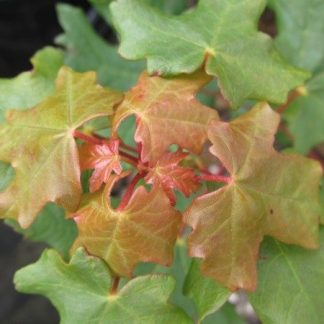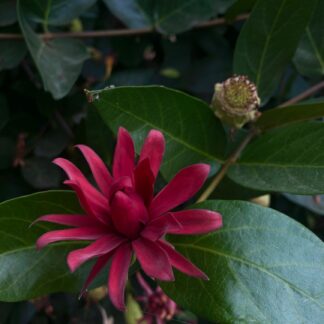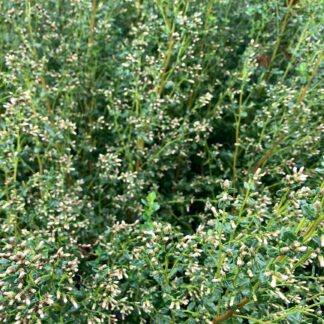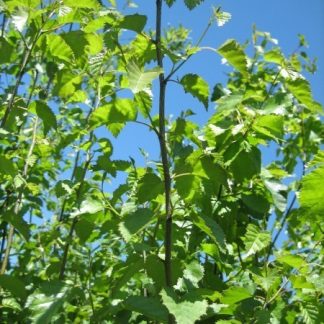Sorbus scopulina
western mountain-ash
Habit: This tall, erect, deciduous shrub has alternate leaves which are composed of 9-13 yellowish green, sharp-pointed leaflets. Almost the entirety of the margins of the leaflets is sharply serrated. Olive-drab young twigs turn green-brown with age and branch out in thickets. When in bloom, the entire plant is adorned by tiny white flowers densely clustered into a conspicuous, flat-topped bouquet. In the fall, foliage becomes brilliant red and flowers are replaced by shiny orange to scarlet berrylike pome fruit. Both the twigs and the bark of Sorbus scopulina are marked by raised, somewhat corky, slitlike pores called lenticels. New growth buds are sticky, white and hairy.
Ecology: it prefers open locations in forests, rocky hillsides and riparian areas at mid to high elevations. It is found from California to Alaska and eastward to the Rocky Mountains.
Growing Conditions: Western mountain-ash favors moist but well-drained soils and sunny spaces. In areas where Sorbus sitchensis grows adjacent to colonies of S. scopulina, the two species hybridize with each other creating specimens that exhibit intermediate characteristics.
The tender twigs of Western mountain-ash are an important food source for wild animals and its berries are quickly consumed by gray jays and several other species of birds. These fruits were not commonly eaten by Native-Americans, except for the Haida that occasionally snacked at them raw. Today the berries are used to make wine and a tart jelly, or can be added to pies and pancakes as an alternative to more common ingredients. In order to reduce bitterness, the fruit should not be harvested until the plant has endured several frosts.
Specs
Deciduous shrub
8-15 feet (2.4-4.6 m)
5-10 feet (1-5-3.5 m)
3b to 8b

